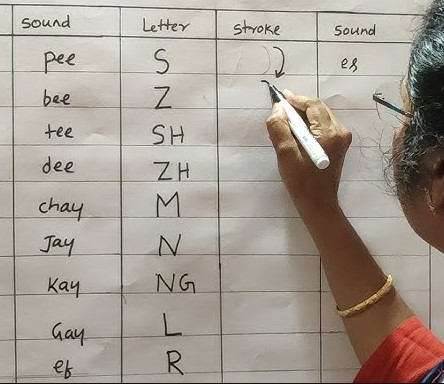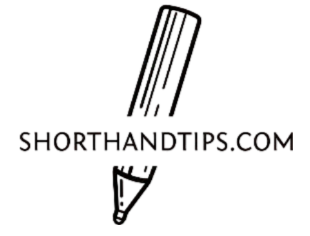When we pronounce the word Shorthand, suddenly, in our mind, comes a thought about a shortcut to anything. So, Shorthand is a fantastic writing system that can write quickly using unique and specific symbols, abbreviations, and strokes instead of whole words or sentences. Shorthand is essential for legal, journalistic, and secretarial professionals. Even in this digital era, Shorthand remains valuable for people looking to improve their writing speed and transcription accuracy. However, Shorthand language is an art and skill that can be used in various fields of life.
Many types of Shorthand languages can be chosen according to need. In this article, we will explore three popular types of Shorthand: 1) Pitman Shorthand, 2) Gregg Shorthand System, and 3) Teeline Shorthand system, and determine why Pitman is the best choice for career building.
Table of Contents
TogglePitman Shorthand System

One popular and old shorthand system is Pitman Shorthand, developed in the 19th century by Sir Isaac Pitman. Pitman Shorthand is Considered a Limiting and Logical Method. It has been utilized in stenography for over 150 decades now.
Read About: How To Learn Shorthand Typing At Home? A Step by Step Guide
Features of Pitman Shorthand
Phonetic System:
Pitman Shorthand is a phonemic script that satisfies the readability criterion. The term ‘cat’ is represented in writing as symbols for the sounds /k/, /a/ and /t/. This phonetic method allows for quick capture of spoken information.
Representation of Vowels:
Pitman Shorthand’s unique feature is its representation of vowels. Vowels can be recognized by the tiny dot or dash above or below a stroked consonant. This allows Pitman Shorthand to transcribe a wide range of natural sounds accurately.
Differentiation in Sounds:
Pitman Shorthand marks some sounds with thick lines, and others go taller and thinner. Think about it this way: a light stroke indicates a “p” sound and a thick one refers to “b,” so you have some context of the thickness whenever there is a reason for speed alongside accuracy in recording voice.
Word Position:
In Pitman, a word’s position above or below the line also has meaning. Vowel sounds can also be indicated by “diacritics” (minor visual marks) written above or below the line of writing, which would provide more information upon which to improve.
Advantages of Pitman Shorthand
Speed and Accuracy:
It is a simple fact that Pitman can be written very fast, sometimes more than 120 words a minute. The fact that it is a well-structured language with a foundation in pronunciation makes UTF8 suitable for transcribing long speeches or doctoral dissertations.
Various uses:
Pitman Shorthand is a tool that can be employed in many professions, from court reporting to journalism. It is still globally taught and a favored method in many high-stakes professions.
Acclaimed Worldwide:
Pitman Shorthand is famous internationally and can be a standard system for all learning and writing. Pitman Shorthand is very much preferred whether you are working out of the UK, India, or Canada.
Job Prospects:
Pitman shorthand helps in building a career. As well as numerous legal professionals, law clerks, and court reporters
Disadvantages of Pitman Shorthand
- Pitman shorthand is very efficient, but there are some disadvantages.
- Pitman shorthand uses a system of thick versus thin lines based on one aspect of the line width (line thickness) for position, and perpendicular orientation’s inherent front/back location can make use of complex phonetic applications. Like everything else, it takes practice and commitment.
- Reliance on Good Penmanship: Users need legible handwriting, especially when separating a character’s thicker and thinner parts.
- Pitman Shorthand may have a few flaws, but it is the right pick for career development, as discussed below in detail.
Gregg Shorthand:

In 1888, John Robert Gregg created a simplified alternative to Pitman called Gregg Shorthand. The Gregg Shorthand system is more straightforward to learn than others, but it sacrifices some versatility for this simplicity.
Features of Gregg Shorthand
Not Phonographic system:
Unlike Pitman, Gregg Shorthand does not write in photography. The writing is based on the non-phonetic. Words are letter-by-letter, not sound-by-sound, which some users find easier to understand.
Writing Type:
Gregg Shorthand appears quite a bit like cursive writing. The system uses a cursive-like stroke without angles, which allows some users to write faster and aids in Gregg’s hallmark smoothness and speed.
Unvarying Line Thickness:
One of the most stark contrasts to Pitman, with Gregg’s line thickness, does not help us distinguish sounds. This also makes all strokes of a character equally thick (something some people find more straightforward to use).
Advantages of Gregg Shorthand
Simplicity of Learning:
Gregg Shorthand is easier to learn than Pitman because it does not require positional writing or changes in line thickness.
Written Fluidly:
Gregg Shorthand, The flowing, cursive style strokes of Greg Shorthand suit anyone who likes moving across the page without stopping.
Beginning Shorthand for Personal Note-Taking:
Because it is quick and easy to pick up, Gregg’s Shorthand tends to be used less as stenography and more as a form of personal note-taking.
Disadvantages of Gregg Shorthand
- Non-PhonetNonphoneticGregg Is NonphonetiNonphonetic Not Take Down Speech So Accurately Due To The Fact Pitman Shorthand As Speaking Difficulties Like Anything Words And Falso Relatives.
- Inferior Professional Application: Gregg has less typical professional uses beyond courtroom reporting and legal transcription, as its strictness is much more rigid to maintain. Paralegals and stenographers in places such as court also favor Pitman for its speed and accuracy.
Teeline Shorthand

Developed in the 1960s by James Hill, a shorthand teacher, Teeline Shorthand is one of these modern systems. It was intended to be easier for journalists, PR professionals, and others in communication-centric fields to learn.
Features of Teeline Shorthand
Alphabetical-Based Typing:
This means that Teeline shorthand is founded on the alphabet and removes unnecessary letters from individual words to create a more logical learning environment. For example, you can bung out vowels in Teeline if the word remains clear from context.
Versatile:
Teeline allows each writer to tweak the system just a bit so that it works well with their writing. This makes it a good stop for those more into making up their Shorthand.
No Special Symbols or Variations of Line Thickness: Unlike Pitman and Gregg, Teeline does not employ special symbols for specific sounds or line thickness variations. The only caveat is that it’s alphabet-only (easier for newbies to learn and write).
Advantages of Teeline Shorthand
- Most accessible to Learn: Teeline Shorthand is the most learnable of our three featured systems and, therefore, often cited as the best for casual or inexperienced users.
- Customizable: Users can add shortcuts and abbreviations to write how they do.
- Suitable for Journalism—Teeline is a favorite of journalists because it’s relatively fast and straightforward for recording speeches and interviews.
Disadvantages of Teeline Shorthand
- Not Quite as Speedy: Though Teeline is easier to learn, it doesn’t include the same speed capabilities as Pitman or Gregg Shorthand. It might not be suitable for business professionals trying to record speech at quick speeds.
- Not For Professional Use: Teeline is not commonly used professionally, unlike Pitman Shorthand, which can be helpful in court reporting and legal transcription work.
Why Pitman Shorthand is the Best Choice for Career Building
Here are a few reasons why Pitman Shorthand stands out as the best shorthand system for building your career:
Speed and Precision
Nothing can surpass Pitman Shorthand in terms of speed and accuracy. Its phonetic style and the alternating line thickness show how it babbles (fr.). Court reporters, for example, are busy in the legal profession. Pitman Shorthand was devised to enable them to transcribe every word.
Professional Versatility
Pitman Shorthand is used in many sectors and is among the most valuable Shorthand. There are plenty of career opportunities for professionals who manage to master Pitman — from law through journalism. This is highly valued, for example, in legal proceedings and media reporting, where taking fast yet accurate notes pays off.
Global Recognition
Pitman Shorthand: Unlike Gregg or Teeline, the following international Shorthand level is being taught. Known worldwide by generations of graduating stenographers, it makes a perfect choice for anyone looking at international work as a transcriber or reporter.
Increased Job Opportunities
Whether you want to become a legal transcriptionist, court reporter, or administrative assistant, quality becomes one of the hiring factors about Pitman Shorthand. Content writing companies use it when professionals in high-stakes industries seek professionals to capture important information under pressure.
Conclusion
All three systems, Gregg, Teeline, and Pitman Shorthand, have their strengths, but it mostly depends on what you intend to do with them; for career purposes and positivity in hobbies, Pittman is the name. The processing power, accuracy, and worldwide analogy positioning solve many problems for people in various industries. You can even improve your skills and explore new career possibilities if you work to be proficient in Pitman Shorthand.
